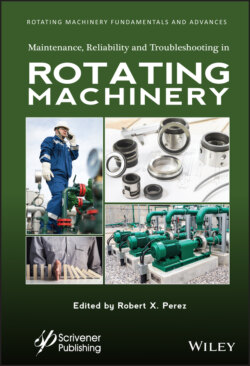Читать книгу Maintenance, Reliability and Troubleshooting in Rotating Machinery - Группа авторов - Страница 35
Mean Time Between Failure (MTBF)
ОглавлениеMTBF forecasts the average time between one machine failure to the next under normal operating conditions. In other words, this metric can be used to predict the average life expectancy for a piece of equipment. To calculate MTBF, use the following formula:
Where M is the total equipment count, T is the reporting time, and R is the number of failures during the reporting time. For example, let’s say we have 200 pumps in the population, and there are 20 failures in a 3-month reporting period. This would mean that the mean time between failures is 200 x 3/20 or 30 months between failures.
A higher MTBF is preferred. If one pump population (A) has a higher after MTBF value than another pump population (B), we can conclude, on average, the pumps in the A population will last longer in service than the pumps in the B population and are therefore more reliable than the pumps in the B population. Since the MTBF metric provides an idea as to how long the equipment will work without failure, it is a useful tool for forecasting repairs and replacement costs.
Note that sometimes MTBF and MTBR (Mean Time Between Repairs) metrics are used interchangeably. While they appear to be identical, they are not. The reason is that we may not know the exact time of failure, but we do usually know when a repair was done. Consider an example where one of a pair of spared pumps fails and is shut down and the spare pump is immediately started to keep the process running. It’s possible that the failed pump may not be repaired for weeks, depending on the condition of its twin and the shop’s workload. Therefore, we may not document the actual time of the failure, but we will know the time of repair. Make sure you know if the metric is based on failure data or repair data before using it to make decisions.
